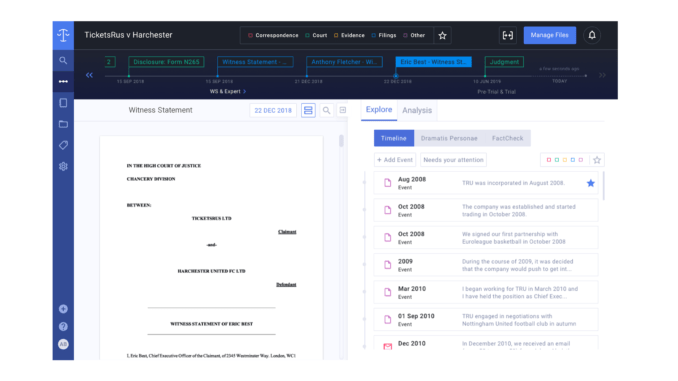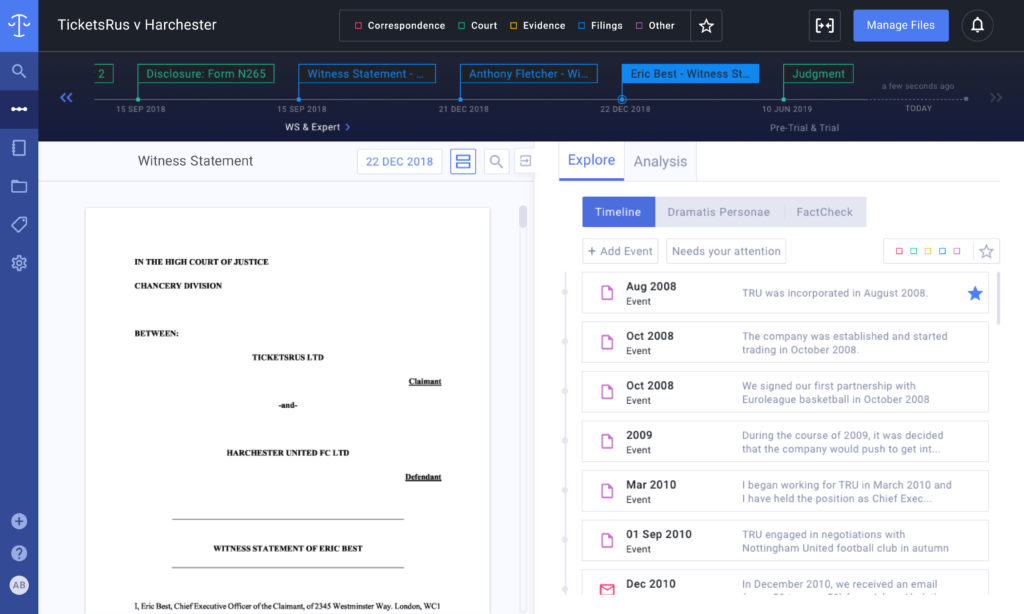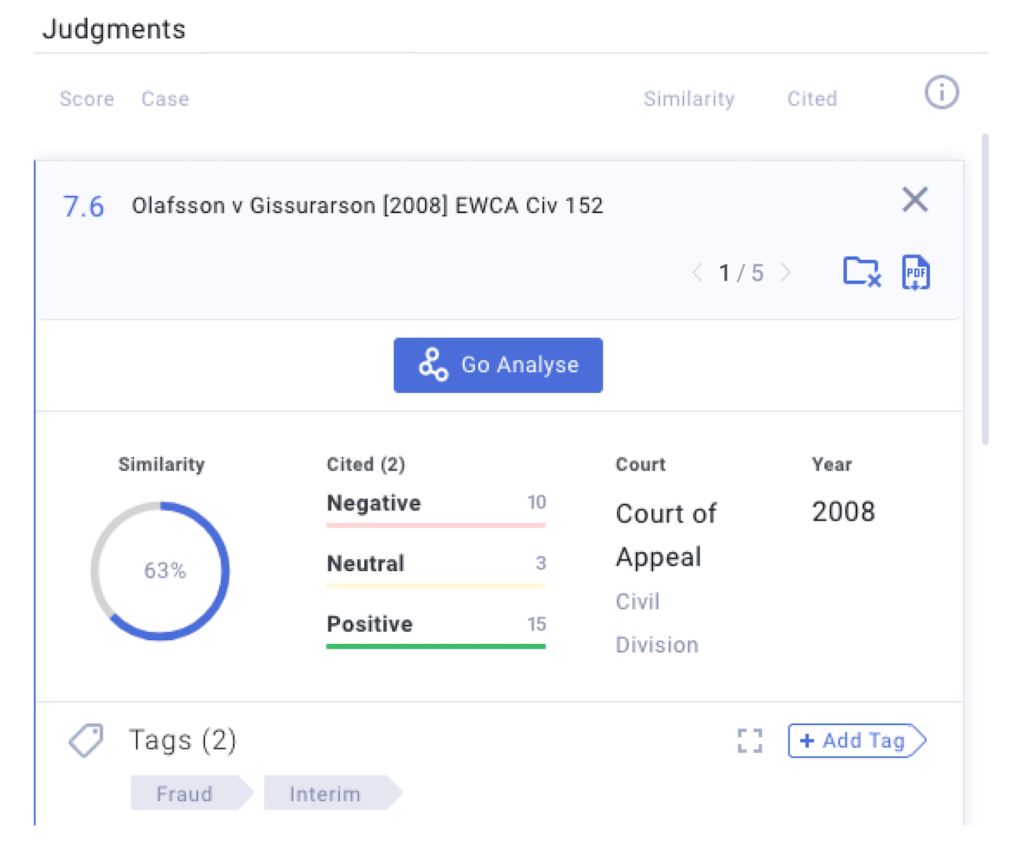
LitiGate, an end-to-end platform for litigation, has been working hard since forming in 2018 and is focused on achieving its goal: becoming the Operating System (OS) for the litigation process.
Artificial Lawyer caught up with Nimrod Aharon, CEO and Co-Founder of the company, which has offices in Tel Aviv and London, and which now has a growing list of clients ranging from Freshfields, to Slaughter and May, to Mishcon de Reya, to Baker McKenzie.
Probably the simplest way of explaining what LitiGate does is to describe it as a platform that uses a range of technologies, from basic automation to some quite advanced use of deep learning techniques and NLP, to make your litigation run smoothly and easily by taking all the unstructured data in the case and delivering tangible value in return.
A longer list of what LitiGate is capable of is below, but a good example of the approach to taking what is there and using software to add value can be seen with its Timelines feature. This uses NLP to zip through all the documents in a case, strip out information related to dates and then arrange it all for you in an easy to read graphic.

Another example of what the system can do is the AI Legal Research tool, which can ‘build a unique fingerprint’ of your case and then searches through past cases to find related matters and precedents.
Again, this is not magic, it’s simply very solidly made software that takes your unstructured data and returns value, in this case providing examples of past matters that relate to your case in ways that are far beyond keywords or case type search.

And one feature that especially stood out was the Thespian-sounding Dramatis Personae, which fillets your documents and pulls out all the key people, companies and other entities involved in a case.
‘LitiGate is there to reduce friction, to save money and time, and reduce risk,’ Aharon said and stressed that reducing risk is a real outcome as users are less likely to lose information (see the Bundles feature below), and hopefully are more likely to find important data that relates to their case.
The economics of all of this is not lost on Aharon either. ‘Lawyers are saving about 300 hours on an average case by using this platform,’ he explained. Also, he is determined that their pricing model will not be a barrier, as they can be to some data heavy analysis systems.
‘Instead of paying per gigabyte or per case, LitiGate does it all with unlimited data,’ Aharon added.
Based on feedback this site has received, paying loads for data usage is something law firms are not that keen on. LitiGate’s approach is that when you use their platform why should you be paying for storage and data processing? What the client actually wants to pay for is the know-how embedded in your software.
Here’s a longer list of things the system can now do:
- Timelines (Document Timeline and Chronology features) LitiGate identifies, categorises and dates all uploaded documents to create user-friendly timelines and accurate chronologies of events from the raw facts within each document.
- Search (Crosscheck & Smart Search features) Finding key information within case documents has never been easier. Our OCR technology facilitates searches across all documents simultaneously. LitiGate also connects the dots by automatically alerting users to documents or events in their case that are related to each other.
- AI-Driven Legal Research – No more trawling through hundreds of irrelevant case law search results. By matching semantic patterns in uploaded documents to those in past cases, we build a unique fingerprint of a user’s case and use it to hunt down the precedents they need most.
- Bundles – Quickly and painlessly create electronic bundles of relevant documents; whether for a meeting, hearing or trial. Users simply select the documents they want to include and we do the rest.
- Dramatis Personae – LitiGate searches all case files to identify all the actors in a case and works out the connections between them.
- Tag Manager – Like a colour-coded Post-it-Note system on steroids, tags allow users to map and categorise everything across the case universe.
- Teamwork – Comment directly on documents so nothing falls between the cracks. Real-time mentions notify team members of anything that requires their attention.
Artificial Lawyer asked whether LitiGate would be seen as similar to an eDiscovery tool? Aharon said it wasn’t designed to be one, but that in terms of its ability to help arrange case documents (see Bundles above) and other case management capabilities, it could well help. He added that the document intake and organisation phase is just one part of preparing for litigation, LitiGate then offers a lot more.
So, impressive stuff. But where is this all going?
‘This is the operating system for the whole litigation process,’ Aharon stated.
Whether clients see it this way remains to be seen, but they’ve bagged some major law firms as clients, grown now to about 30 people in size, and have offices in the UK and Israel. They’ve also raised more funding and more attributes are being added to the platform on a regular basis.
LitiGate has come a long way since early 2018, when the then two-person team joined the Mishcon de Reya MDR Lab incubator in London.
‘The most important thing is delivering on the promise to revolutionise disputes work. When we started we wanted primarily to automate legal research,’ Aharon added.
Now of course, they are doing so much more, every few months building out what’s possible.
Will this catch on? Given the growing pressure on law firms to better manage their litigation costs, especially when there are fixed/capped or contingency fee arrangements with a client, it seems almost inevitable that they will reach for this type of tool to reduce costs and save time.
As to becoming THE litigation OS, time will tell. But, LitiGate looks to be on the right track.
1 Trackback / Pingback
Comments are closed.